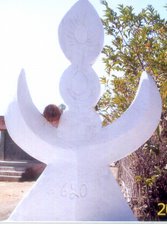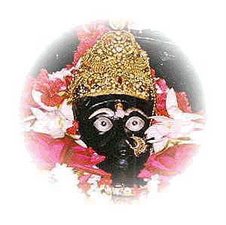The limits of violence
The experience from Andhra Pradesh has shown, in sharp profile, allthat violence is capable of achieving and taking away.By : K Balagopal
India's Maoist movement is today the site of multiple paradoxes. Onthe one hand, many groups that would have unequivocally condemned themovement a decade ago for its violent methods are today increasinglyprepared to see whether it has anything of value to offer – keepingopen the question of violence. This change of heart has largely beenbrought around by the extreme insensitivity of the state – a changethat ideological persuasion long failed to achieve.
On the other hand,by increasingly relying on violence, including more arbitrary forms ofit, the Maoist movement is receding farther and farther from anymeeting point with such open-minded groups. In the era ofneo-liberalism, many activists are not objecting as vociferously toviolence in the 'interests' of the people as they once did, given thatthe current global socio-economic set-up is widely seen as aninstrument of visible and invisible violence, the victims of which arethe most vulnerable communities.
But nearly all would still insistthat the use of violent methods is nothing more than an exceptionaloption. Here is where the Maoists have yet to come around.Andhra Pradesh offers a good case study of the compulsions thatunderlie the choice of violent methods of struggle, as well as theunpleasant consequences of the decision to take up arms. The Maoistmovement owes its political character to the vicissitudes of itsunfolding in both Andhra Pradesh and Bihar.
But today, the movement isat its lowest ebb ever in Andhra, pushed to the corners of foresthideouts and into neighbouring Orissa and Chhattisgarh. At the sametime, the movement is more prominently in the thoughts of politicallyactive people than at almost any time in the past. Whether thatinterest can help the movement to truly break the shackles ofrepression, however, is a question that no close observer can avoidposing.Too frequently, the discussion of revolutionary violence proceeds fromthe theoretical formulation made by the Naxalite movement – the stageof development of Indian society within the Marxist-Leninist paradigm,under which armed struggle is the only path to egalitarian revolution.
However, neither the Naxalbari uprising nor any violent struggleundertaken by the Naxalites thereafter arose purely from thispolitical belief. Instead, particular situations on the ground alwaysmade the choice a real possibility, and therefore made the theoreticalbelief more persuasive. Dogmatists on either side of the debatebetween violence and non-violence rarely understand that the averagehuman being is simply not dogmatic in this particular issue. Moralpragmatism, coupled with abhorrence of any unnecessary or unjust useof violence, would about sum up the common person's attitude.
When thevery capacity for large-scale violence leads the activist to ignorethis attitude, a gap develops – one that the activist will perforcecome to rue someday.Sangham to dalamIn Andhra Pradesh, the Naxalite movement's initial political dogmatism(usually blamed on Charu Majumdar, though he was probably not the onlyone to be blamed), which branded all mass activity as'un-revolutionary' , gave way to an important realisation. Even for theviolent overthrow of the state, there is still a need to organise thepeople on their immediate social and economic demands, whilesimultaneously educating them about the preferred long-term strategyof armed struggle.
Soon after the lifting of the State of Emergency imposed by IndiraGandhi in 1975, there was a mass upsurge in Karimnagar District,followed quickly in the other Godavari basin districts of Telangana.The communities that took part in this action were the poorest andsocially lowest in the area, and they had organised around issues ofwage, land and social oppression, all intricately linked with thelarger issues of caste and gender. The targets of the movement –landlords as well as representatives of the state – knew that theNaxalites were behind this process of organisation, and also that theNaxalites believed in violence.
But the struggle itself was by the unarmed poor, though of unprecedented determination and confidence. Afew landlords of particularly vicious disposition were killed by theNaxalite cadre, but these acts could only be seen as 'supplementary'to the struggle of the people, not as a substitute for that struggle.The organisational centre was the agricultural labourers union, orRaythu Coolie Sangham (generally just known as the Sangham), and notthe underground armed squads, known as dalams.The state came down most heavily during this phase of the Naxalitemovement, pointing to the rebels' violence as justification.
At that stage, however, the violence was no more than what the mainstream political parties themselves were indulging in.The difference here was that this was not violence in the interest ofthe individual or faction, but rather in the interest of the most downtrodden communities. That should have put the movement on a highermoral plane, but morality is the last thing that dictates government policy, then or now.
In reality, the fear was palpable in political circles that the rural socio-economic structure – the intact preservation of which is one of the fundamental compromises on whichthe Indian polity is based – was in danger of being irreparablyshattered by the Naxalite movement.The paradox is that this is what in the end did happen, in spite ofall of the state's repression.
As a mere idea, upsetting socialhierarchies is as potent as any actual redistribution of property, andif the redistribution could be halted by force, the idea could not. Itwas unstoppable, and thus went ahead. And it cannot be overstated thatif the downtrodden no longer feel downtrodden in Telangana, the creditgoes substantially to the Naxalites.
While it is sometimes said thatthe commercialisation of the rural economy would have had the sameeffect sooner or later, this is a spurious line of argument, for tworeasons. First, few would suggest that no other force would have beenable to achieve the results achieved by the Naxalite movement.
Second,while commercialisation may well have been able to put an end to someof the more obnoxious forms of social thought and relation, it wouldnot have engendered social consciousness of the type that the Naxalitemovement succeeded in sowing within India's low social classes.Escalation and breakdownRather than contemplating the might-have-beens of history, let us lookat what the Naxalite groups did in response to state repression.
The party, known for a long time as People's War, decided on retaliation without giving up mass struggle – in theory, at any rate. In themeantime, the other major party, known as the Chandra Pulla Reddy group, decided on resistance based primarily on the people, withoutgiving up armed struggle. The difference was in the emphasis on armedstruggle versus mass struggle.
In the end, neither really succeeded,though it could be said about the People's War – now called the CPI(Maoist) – that the jury is still out.The state retaliation that started during mid-1985 resulted in aspiral that is yet to abate. Correspondingly, the dalam replaced the Sangham as the organisational focus of the struggle. Such a shift tookplace, for instance, in Adilabad, which witnessed severe foodshortages. The early strategy of villagers raiding shops and granaries and redistributing the grain gave way to armed action by dalams, wholooted not just food, but also money, and wantonly demolished households.
Similarly, in the place of struggles by the people of the Sangham forhigher wages, villages started seeing wages go up because of threatsby the party, made visible through posters demanding higher wages.Settlement of disputes by the party in the presence of and with theparticipation of the people was replaced by decisions by the dalam inthe presence of just a few villagers.
Those who disagreed with this process would stop going to these 'people's courts', so eventually theonly audience at the adjudications would consist of the party loyalists.All of this was taking place amidst heavy state repression: in 1992,the number of police 'encounter' killings crossed 200 for the firsttime; after 1996, it was in a rare year in which less than that numberwere killed. The People's War was also killing in equal numbers,mostly 'informers' whose identification was wholly subjective.
In 1992, the People's War was banned, as were its mass organisations.Police torture became routine and increasingly vicious, while massiveamounts of funding outfitted the security forces with sophisticated weaponry. The dalams followed suit, acquiring equally sophisticatedweapons and becoming experts at various types of mines and explosives.So many police jeeps were blown up during this time – inevitablykilling untargeted individuals as well – that the police eventuallystopped using vehicles entirely in Naxalite areas, preferring to moveon foot.
The radical dimension Generalised violence draws a shroud of silence over events. It has theeffect of shutting out both critical thought and assertiveness, whichis fatal for the protection of human rights. Initiative rests insteadwith those who hold the guns, on whichever side they may be. Rebelswho employ violence systematically attribute their decisions to 'thepeople', but the people in truth have little say in the matter.Instead, they become spectators to the political process, a cleardenial of an essential democratic right. Those who agree with therebels may well be content – and, to the extent that the majorityagree with them, this contentment may appear universal. Butcontentment is no substitute for democracy, a fact that comes alivethe day the agreement ceases.The effects that insurgencies have on children have been widelydiscussed, but the ramifications go far beyond the young. It is aparadox that radical movements begin in response to pain andsuffering, but the spiral of violence and counter-violence thataccompanies such movements and the resultant state response generatesconsiderable insensitivity, insecurity and fear.
One way or another,this tangle of emotions almost inherently disallows respect for humanrights. Repressive laws and extralegal measures undertaken by thestate are promulgated on the backs of images of brutal violence, whichlikewise conjure feelings of growing insecurity. In such a situation,few deign to look at what exactly these repressive laws say or whatexactly these repressive practices mean for the people – all thebetter for the state to spread a wide net, one that catches much morethan those images of violence would seem to dictate.Even the judiciary is not immune to the temptation to play on theseinsecurities.
A full bench of the Andhra Pradesh High Court recentlyrendered a judgement on fake encounters, essentially warning thatthose who infringe on the lives of others cannot ask for protectionagainst state agencies. This essentially means that a 'terrorist' or'extremist' can be shot dead by the police due to the fact that hehimself, purportedly, does not hesitate to take lives in pursuit ofhis aims. In less violent times, such an inflammatory propositionwould have met with immediate public rejection; but in the climate offear created by frequent acts of arbitrary violence, there isconsiderable sympathy for such a dangerous, unprincipled stance.Those who follow strategies that include violence can never be ascareful as they may wish in their use of that violence. They begin bytargeting only the enemies of the 'cause', but frequently fall prey tothe logic of terror: it is not through the elimination of individual'bad guys', but rather through the creation of a climate of fear inwhich enemies dare not function, that most effectively establishes the radical's dominion.
'Preventive violence', in which you claim a right to retaliate even before an enemy is fully formed, is not the brainchild of George W Bush, but an assumption common to strategies of violence of all kinds.One of the more remarkable facts about Andhra Pradesh is that radicalpolitics has become such a part of the common social consciousness,that it has allowed for the easy proclamation of 'arbitrariness' as ajustifiable form of revolution. For a long time, the Maoists used to apologise for the arbitrary use of guns. But in more recent times,after their spread into Chhattisgarh and Jharkhand, theirs is a muchmore cavalier and trigger-happy conduct.
These days, the Maoists no longer apologise for arbitrary acts of violence. Indeed, the analyses the rebels publish on the Internet these days follow a time-tested strategy: publicise instances of state brutality; then sign off with the suggestion that, under such circumstances, the revolutionaries cannot be asked to be principled in their use of violence.The need to safeguard and secure the lives of revolutionary fightersputs a premium on suspicion as a political strategy, which is in stark contrast to democratic mobilisation.
So-called informers, moles and covert operatives are identified and ruthlessly killed, even whenthere is little more than suspicion as 'evidence'. And since only the poor would have information to give about a poor-people' s movement, it is inevitably the poor who get killed in large numbers in the process.Yet, again, the utter insensitivity of the state authorities to popular opinions and aspirations is continuing to impel many – whowere hitherto against violence altogether – to consider thepossibility that there may be some grain of truth in what the Maoists have been saying all this time. If this is to be the rope that helpsthe Maoists hoist themselves up, however, the rebels need to pay backthe compliment by incorporating common human scruples into theirunderstanding of violence: that it may be useful, at times evenunavoidable, but that violence should never set the terms of political activity. And that the invariably, inherently, destructive impact of violence on democratic processes and practices must set the strictest of limits for its use.
http://www.himalmag .com/2007/ december/ cover_feature_ andhra_pradesh. html
This article is an edited version of the original, which is available with the author.
source- CgNet
Subscribe to:
Post Comments (Atom)







1 comment:
Balagopal was a close friend for 26 years. However, I object to his observation that the Naxalite movement formulated armed struggle as the only method. That was the continuation of the "annihilation of the class enemy" strategy of the dominant tendency the PWG/Maoist factions and their predecesors and other similar factions such as the ROC.
There is decades of experience in Andhra Pradesh of Naxalite movement fighting non-violent struggles by other factions. Particularly in Karimnagar and the Godavari Valley.
It is unedniable, that all the factions have become degenerate and are stuck in bureaucracy and lack of creative functioning as well as other issues of crimininalisation to various degrees.
Post a Comment